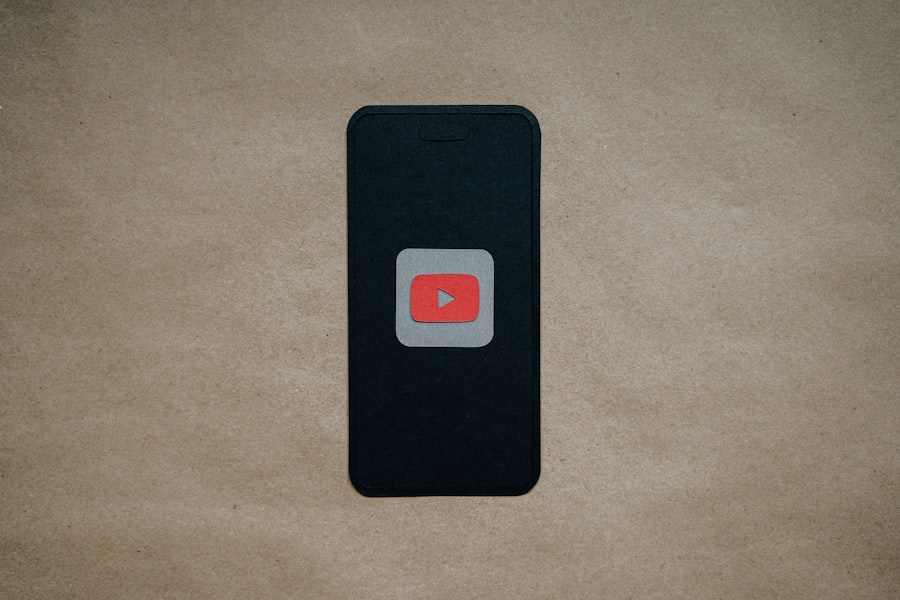In recent years, you may have noticed a significant shift in how content is consumed online. Short form video platforms like TikTok, Instagram Reels, and YouTube Shorts have surged in popularity, captivating millions of users worldwide. This rise can be attributed to several factors, including the increasing demand for quick, digestible content that fits seamlessly into your busy lifestyle.
As attention spans shorten and the pace of life accelerates, these platforms have emerged as the go-to source for entertainment, information, and social interaction. The appeal of short form videos lies in their ability to deliver engaging content in a matter of seconds. You can scroll through an endless feed of clips that range from comedic skits to educational snippets, all designed to capture your interest almost instantaneously.
This format not only caters to your desire for instant gratification but also allows creators to experiment with their storytelling techniques, resulting in a diverse array of content that keeps you coming back for more. As these platforms continue to evolve, they are reshaping the landscape of digital media consumption and redefining what it means to be entertained online.
Key Takeaways
- Short form video platforms have seen a significant rise in popularity, with users consuming content in quick, bite-sized formats.
- The science behind short form video addiction lies in the brain’s response to quick, engaging content, leading to increased dopamine release and a desire for more.
- Social media plays a crucial role in the consumption of short form videos, with platforms like TikTok and Instagram Reels driving the trend.
- Short form video addiction can have psychological impacts, including decreased attention span and increased anxiety and stress levels.
- Generation Z is particularly drawn to short form videos due to their quick, entertaining nature and relatable content.
The Science Behind Short Form Video Addiction
Understanding the allure of short form videos requires delving into the science of addiction. When you engage with these bite-sized clips, your brain releases neurotransmitters like dopamine, which are responsible for feelings of pleasure and reward. Each time you watch a video that resonates with you or elicits a strong emotional response, your brain reinforces the behavior, making you more likely to return for another hit of that pleasurable experience.
This cycle can create a powerful feedback loop that keeps you glued to your screen. Moreover, the design of these platforms is intentionally crafted to maximize engagement. The infinite scroll feature and algorithm-driven recommendations ensure that you are constantly presented with new content tailored to your preferences.
This not only heightens your anticipation but also makes it difficult to resist the urge to keep watching. As you find yourself lost in a sea of videos, it becomes increasingly challenging to break free from the cycle, leading to prolonged periods of consumption that can feel both exhilarating and overwhelming.
The Role of Social Media in Short Form Video Consumption

Social media plays a pivotal role in the proliferation of short form video content. Platforms like Facebook and Twitter have integrated video features that allow users to share their favorite clips with friends and followers, creating a sense of community around shared interests. When you see your peers engaging with a particular video or trend, it can spark your curiosity and encourage you to join in on the fun.
This social aspect not only enhances your viewing experience but also fosters a sense of belonging within the digital landscape. Additionally, social media influencers have become key players in promoting short form video content. As you scroll through your feed, you may encounter familiar faces who have built their brands around entertaining and informative videos.
Their ability to connect with audiences on a personal level makes their content more relatable and engaging. This dynamic relationship between influencers and their followers further fuels the popularity of short form videos, as you are more likely to trust recommendations from someone you admire or relate to.
The Psychological Impact of Short Form Video Addiction
| Psychological Impact | Short Form Video Addiction |
|---|---|
| Increased Anxiety | Yes |
| Decreased Attention Span | Yes |
| Impaired Memory | Yes |
| Reduced Productivity | Yes |
| Disrupted Sleep Patterns | Yes |
The psychological effects of short form video addiction can be profound and multifaceted. On one hand, these platforms provide an escape from reality, allowing you to immerse yourself in a world of creativity and humor. However, excessive consumption can lead to negative consequences such as anxiety, depression, and feelings of inadequacy.
As you compare your life to the curated highlights presented by others, it’s easy to fall into the trap of self-doubt and dissatisfaction. Moreover, the constant barrage of content can contribute to information overload, making it difficult for you to process and retain information effectively. The rapid pace at which videos are consumed may hinder your ability to engage deeply with any single piece of content, leading to superficial understanding rather than meaningful connections.
This phenomenon can leave you feeling drained and unfulfilled, prompting a cycle of seeking out more videos in an attempt to fill the void.
The Appeal of Short Form Video for Generation Z
Generation Z has emerged as the primary audience for short form video platforms, drawn in by their unique characteristics and preferences. As a digital-native generation, you have grown up with technology at your fingertips, making it second nature for you to seek out quick bursts of entertainment. The fast-paced nature of short form videos aligns perfectly with your desire for instant gratification and easily digestible content.
Additionally, short form videos often reflect the values and interests of Generation Z, including authenticity, diversity, and social justice. You are more likely to engage with content that resonates with your beliefs and experiences, making these platforms an ideal space for self-expression and connection. The ability to create and share your own videos empowers you to participate in cultural conversations and showcase your individuality in ways that traditional media cannot.
How Short Form Video Platforms Keep Users Engaged

The strategies employed by short form video platforms to keep you engaged are both sophisticated and effective. One key element is the use of algorithms that analyze your viewing habits and preferences to curate a personalized feed tailored specifically for you. This means that every time you log in, you are greeted with content that aligns with your interests, making it difficult to resist the urge to keep scrolling.
Another tactic is the incorporation of interactive features such as challenges, duets, and trends that encourage participation from users like yourself. These elements foster a sense of community and belonging while also providing opportunities for creativity and self-expression. When you see others engaging with a particular trend or challenge, it can motivate you to join in, further deepening your connection to the platform and its content.
The Link Between Short Form Video and Dopamine Release
The relationship between short form video consumption and dopamine release is a crucial aspect of understanding why these platforms are so addictive. Each time you watch a video that elicits laughter or surprise, your brain releases dopamine—a chemical associated with pleasure and reward. This release reinforces the behavior, making you more likely to seek out similar experiences in the future.
As you continue to consume short form videos, this cycle can lead to heightened cravings for that dopamine rush. You may find yourself scrolling through countless clips in search of the next hit of pleasure, often losing track of time in the process. This constant pursuit of dopamine can create an insatiable appetite for content that leaves you feeling both exhilarated and exhausted.
The Dark Side of Short Form Video Addiction
While short form video platforms offer entertainment and connection, they also harbor a darker side that can impact your well-being. One significant concern is the potential for addiction itself; as you become increasingly reliant on these platforms for stimulation and distraction, it can interfere with other aspects of your life. Relationships may suffer as you prioritize screen time over face-to-face interactions, leading to feelings of isolation and loneliness.
Moreover, the curated nature of content on these platforms can contribute to unrealistic expectations and comparisons. As you scroll through seemingly perfect lives portrayed in short clips, it’s easy to feel inadequate or dissatisfied with your own reality. This constant comparison can lead to mental health issues such as anxiety and depression, highlighting the importance of being mindful about your consumption habits.
Strategies for Managing Short Form Video Consumption
To navigate the complexities of short form video consumption responsibly, it’s essential to implement strategies that promote balance in your life. One effective approach is setting specific time limits for how long you engage with these platforms each day. By designating a certain amount of time for scrolling or watching videos, you can enjoy the content without allowing it to consume your entire day.
Another strategy involves curating your feed intentionally by following accounts that inspire or uplift you rather than those that contribute to negative feelings or comparisons. By surrounding yourself with positive influences, you can enhance your viewing experience while minimizing potential harm. Additionally, consider taking regular breaks from short form video platforms altogether; this can help reset your mind and allow you to engage more fully with other activities in your life.
The Future of Short Form Video Addiction
As technology continues to evolve, so too will the landscape of short form video consumption. You can expect advancements in artificial intelligence and machine learning to further refine algorithms that predict your preferences with even greater accuracy. This could lead to an even more immersive experience as platforms strive to keep you engaged for longer periods.
However, this evolution also raises important questions about ethical considerations surrounding user engagement and mental health. As awareness grows regarding the potential negative impacts of excessive consumption, there may be increased pressure on platforms to implement features that promote healthier usage patterns. The future may see a shift towards prioritizing user well-being alongside engagement metrics as society grapples with the implications of short form video addiction.
Finding a Balance: Enjoying Short Form Video Responsibly
Ultimately, finding a balance between enjoying short form videos and maintaining a healthy lifestyle is crucial for your overall well-being. Embrace these platforms as a source of entertainment and creativity while remaining mindful of their potential pitfalls.
Engaging with short form videos responsibly allows you to harness their power for connection and inspiration while safeguarding your mental health. Remember that it’s okay to take breaks and step away from screens; real-life experiences often provide deeper fulfillment than any digital clip ever could. By cultivating awareness around your consumption habits, you can navigate the world of short form videos with intention and purpose.
Short-form video content has taken the digital world by storm, captivating audiences with its quick, engaging format. The addictive nature of these videos can be attributed to their ability to deliver instant gratification and a continuous stream of new content, which keeps viewers hooked. According to an article on com/’>Unplugged Psych, the psychological mechanisms behind this addiction are similar to those found in other forms of digital media consumption.
The article delves into how the brain’s reward system is activated by the rapid succession of entertaining clips, making it difficult for viewers to stop watching. This constant stimulation can lead to a cycle of compulsive viewing, as users seek out the dopamine hits that come with each new video.
LEARN WHY Your Brain Isn’t Addicted to Likes; the Algorithm Gaslights You Daily, Hard.
FAQs
What is short form video?
Short form video refers to videos that are typically under 10 minutes in length, and are often found on platforms like TikTok, Instagram Reels, and YouTube Shorts. These videos are designed to be easily consumable and shareable, and often feature quick, engaging content.
Why are short form videos so addictive?
Short form videos are addictive for several reasons. They are often designed to be visually stimulating, with quick cuts, catchy music, and engaging content. Additionally, the short length of these videos makes them easy to consume in a short amount of time, leading to a “just one more” mentality.
How do short form videos impact our brains?
Short form videos can impact our brains in a similar way to other forms of social media and entertainment. They can trigger the release of dopamine, a feel-good neurotransmitter, which can create a sense of reward and pleasure when watching these videos. This can lead to addictive behaviors and a desire for more content.
What are the potential downsides of watching too many short form videos?
Watching too many short form videos can lead to excessive screen time, which has been linked to negative impacts on mental health, sleep patterns, and overall well-being. Additionally, excessive consumption of short form videos can lead to a decrease in productivity and a reliance on instant gratification.




